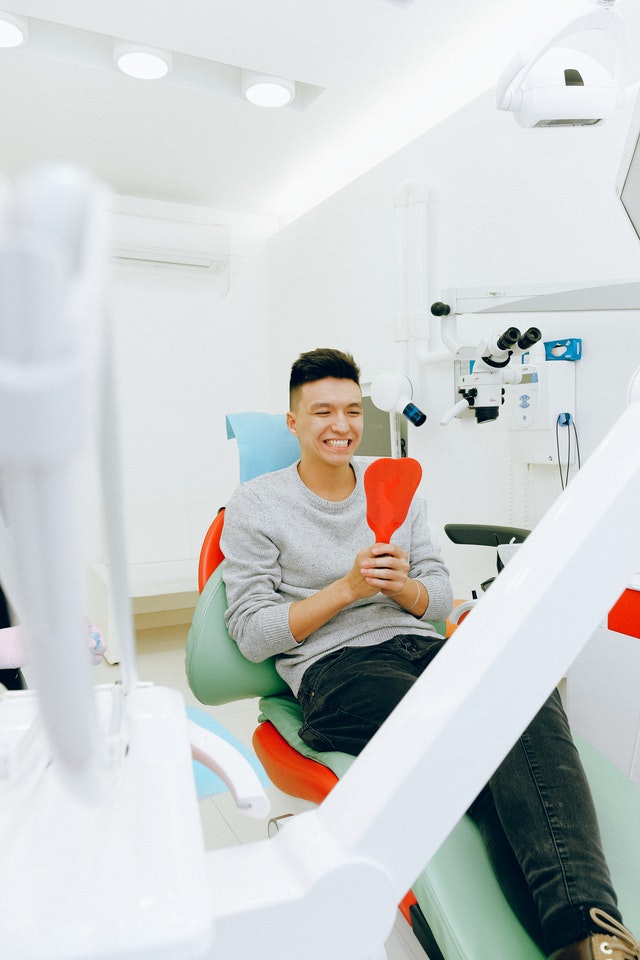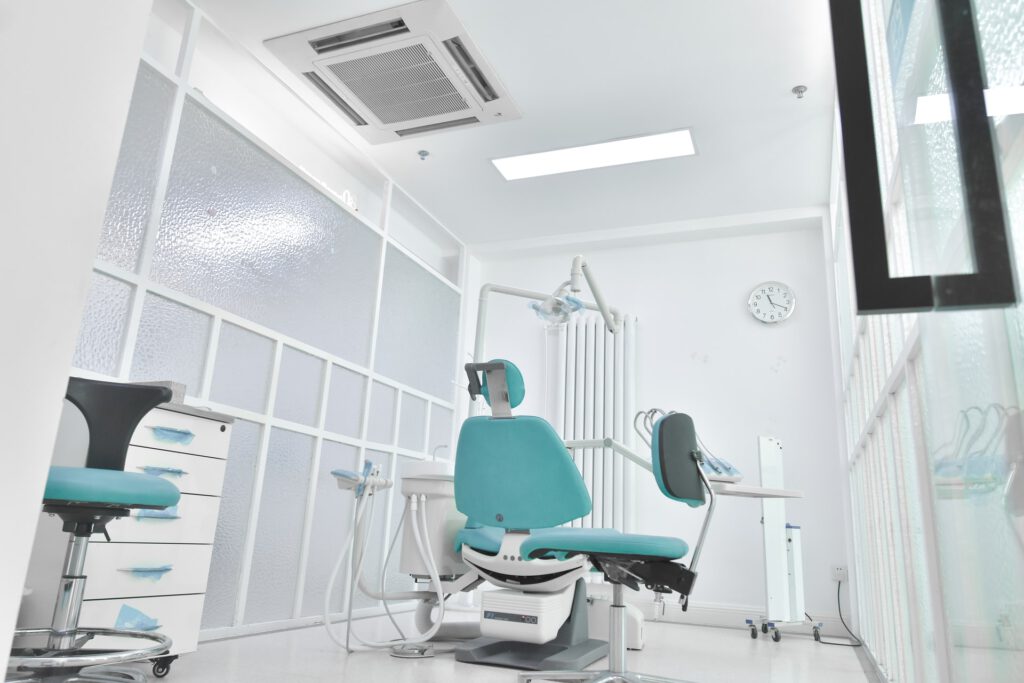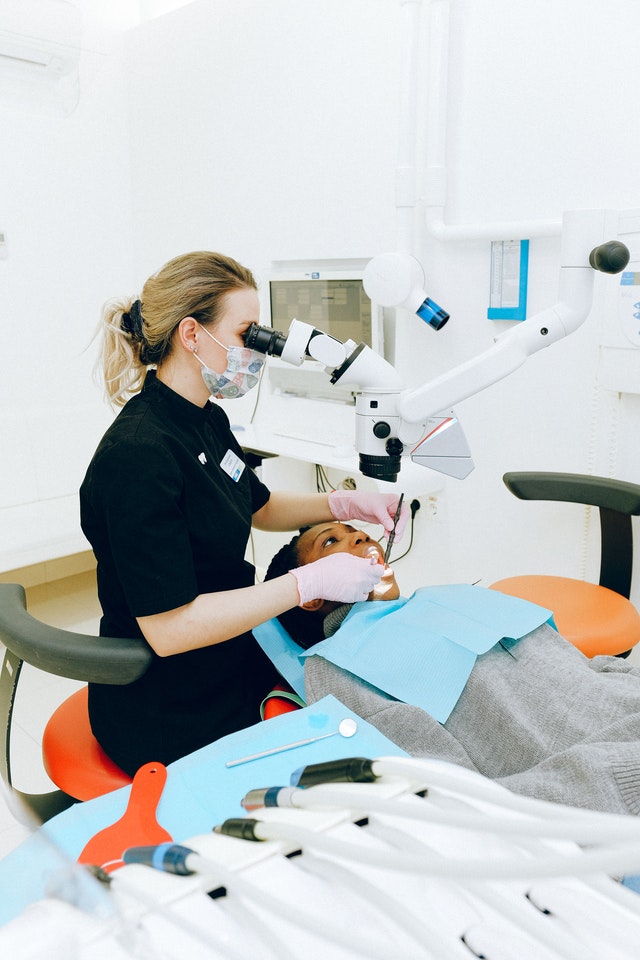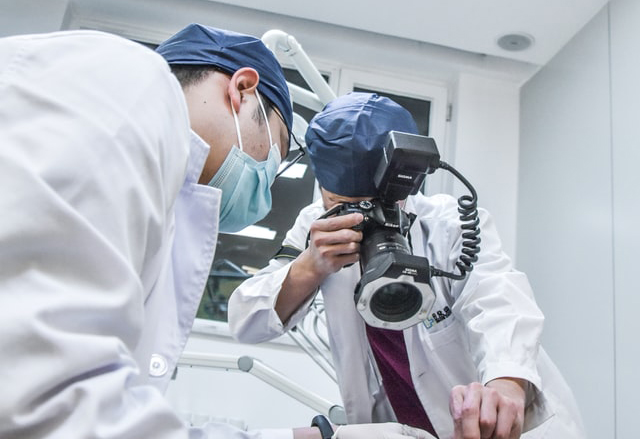Oral health and dentist appointments are no longer a luxury but a necessity. Consider how the rate of dental visits has progressively increased over the years according to this CDC data. This is not merely an ‘American problem’ but is now recognized as a global burden.
We now have a case where the number of patients seeking dental care far outpaces the industry’s number of healthcare experts, especially in industrialized countries. In as much as dental health is raising concerns in less developed countries, there are more pressing issues that AI can and is being used to address, such as food security and housing.
There is a need for a systemic change, and artificial intelligence seems to be a viable solution at present and as we advance. That’s not to say that machine learning will replace human intelligence and skill. On the contrary, the best AI systems need to integrate human presence to learn from them and work effectively.
So how is artificial intelligence breaking barriers in dentistry today?
Current Leaps of AI in Dentistry
Easing the Burden on Dentists
A recent WHO release provided deep insights into how dental diseases affect most industrialized countries. The same study notes how most systemic diseases usually reflect through a change in oral health. This means that a proper diagnosis of oral health can ultimately help prevent other critical ailments or find early treatment.
That said, not everyone can afford a regular dental checkup. The hard financial times means more people will likely dedicate fewer resources to dental checkups. Combine this with pressing health needs and inaccessible geographic locations, and you have yourself a whole population of ‘orally stigmatized individuals.’ Moreover, a good number of people are illiterate when it comes to oral health. But even if more people would afford a regular checkup, the number of dentists would still not fully cater to the demand.
According to the American Dental Association, the ratio of graduate dentists working in dentistry as of 2020 is 60.04 per 100,000 people. However, there are slight differences from state to state.
So, is all hope lost?
On the contrary, we now have self-monitoring mobile applications such as smilo.ai that seeks to meet the demand and ease the dental health professional shortages. The app allows patients to take photos of the mouths and gums and then scans the pictures for gum disease or any dental decay. This information is then accessible to both the patient and the healthcare provider. This not only allows for earlier detection but is now also increasing the awareness of dental health issues to the masses.
The potential in teledentistry is growing exponentially, and we can only hold our breath to see what the future holds.

Early Detection of Diseases
To understand AI’s potential in dentistry, we will look at two applications of artificial intelligence in oral health. These are convolutional neural networks (CNNs) and artificial neural networks (ANNs). ANNs come in handy when recognizing patterns in a given data set. These neural networks then progressively teach the machine to recognize the patterns creating future recall more reliable than human memory, which is prone to forgetting.

On the other hand, CNNs are the neural links used in image diagnostics. These neural networks’ full potential has not yet been fully achieved, since artificial intelligence is still in its infancy. Nonetheless, ANNs and CNNs are currently used to detect periodontal diseases and tooth decay.
This technology eradicates or minimizes errors in diagnostic capabilities among clinicians and tactile sensation, which often vary from one dentist to another. This means more detailed and unbiased assessments of the patient, thus better diagnosis.
With the application of natural language processing (NLP) – similar to Alexa in Amazon – dentists can now issue commands through voice-activated systems to the machine for different tasks. NLP can be used to expose digital radiographs allowing the clinician to capture and compare images hands-free. This translates to optimized infection control protocols as well as less time for patients on the chair.
Deep Learning for Heightened Accuracy
Deep learning involves identifying complex patterns in massive amounts of data – image and speech recognition would be a viable example. As the Internet of Things becomes a reality across different sectors, we see the development of intelligent hardware that maximizes deep learning to offer a more accurate diagnosis of diseases. For instance, ten private dental clinics propose using the MASK R-CNN trained automatic diagnosis model to identify and classify seven different oral diseases.
Moreover, there is now an increase of 18.4% of treated patients in the US due to mobile terminals for clients and dentists. These platforms allow patients to schedule appointments, consultations and provide services of pre-examination and evaluation. This study shows that this has reduced the average screening and diagnosis time by 37.5% for each patient. AI plays a critical role in alerting patients and dentists of upcoming checkups or mandatory visits whenever there is a lifestyle change, managing insurance and paperwork, and sending alerts about any relevant medical history or new allergies.
Amalgamation, Processing, and Analysis of Medical Data
Generally, when we think of AI, we usually formulate the ideological kind of super AI displayed in movies – that is, artificial general intelligence (AGI.) This is the kind of AI that pops in our head – the type that machines that fully match up or exceed human intelligence. But even with all the advancements in AI, we are miles from reaching there. The same can be said in machine learning and dentistry.
For it to work seamlessly, the machines will need tons of data that patients must willingly provide. With proper data management skills, AI will even predict new threats in dental hygiene, such as the Event 201 Scenario. Since data is the new gold, managing that data effectively in any area becomes the platinum standard. Similarly, AI is now used to combine oral patient records to recognize patterns and offer solutions.
Once different and heterogeneous data domains are integrated, AI will enable more silico experiments and innovations. The next few years may witness cleaned, curated, and structured data if AI manages to collect and process oral health data ubiquitously. Such data will enable patient monitoring to be a life-long phenomenon rather than a ‘few-minute-checkup’ scheme, as is the case in the traditional setup.
The Financial Aspect of AI in Dentistry
Outside the operation room and dentists’ chair, artificial intelligence comes in handy in marketing and communicating with patients. AI can now use in-built algorithms to initiate supreme marketing campaigns. More often than not, this requires data mining to identify the ideal time for such marketing campaigns. Once the new patients are recognized, the AI will use its algorithm to detect cancellations, monitor available appointments, as well as track the progress of the marketing. Additionally, deep learning techniques will assist in formulating the most-profitable and effective patient treatment.

Several barriers may prevent us from fully optimizing the capabilities of AI in dentistry. One of them is the financial hurdle in the development and production of new technology. Nevertheless, a few dental companies are breaching the gap and taking up the challenge to embrace artificial intelligence in dentistry. These include Kapanu, Dentistry.ai, DEXvoice, and MMG Fusion. More companies are catching on, and soon we will have collaborations across the industry that will ultimately lower the costs and enable deeper application of artificial intelligence in dentistry.
Valentine Milner is an experienced writer with a keen interest in automation, AI, and other tech topics. Valentine has a BA in Linguistics from Liverpool John Moores University, and she is currently a content writer for Do Supply Inc. When she’s not writing, you’ll find her reading a novel or watching nature documentaries.











